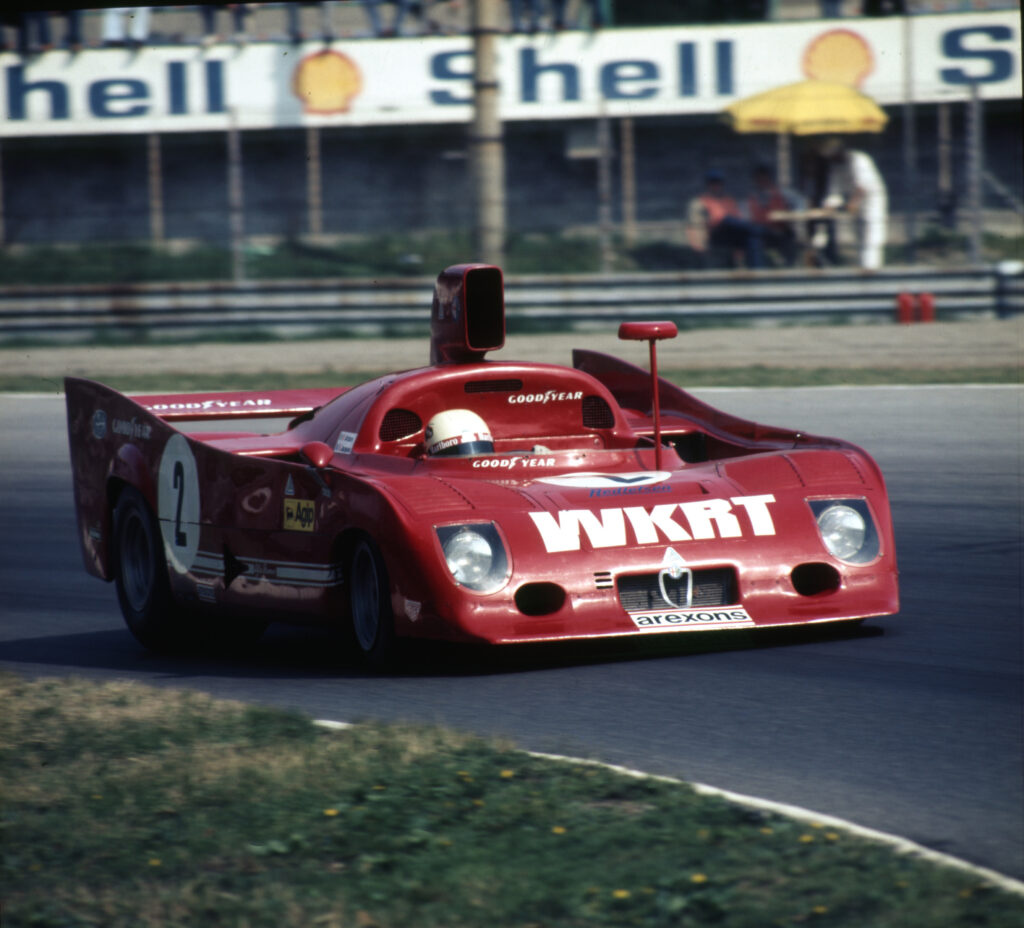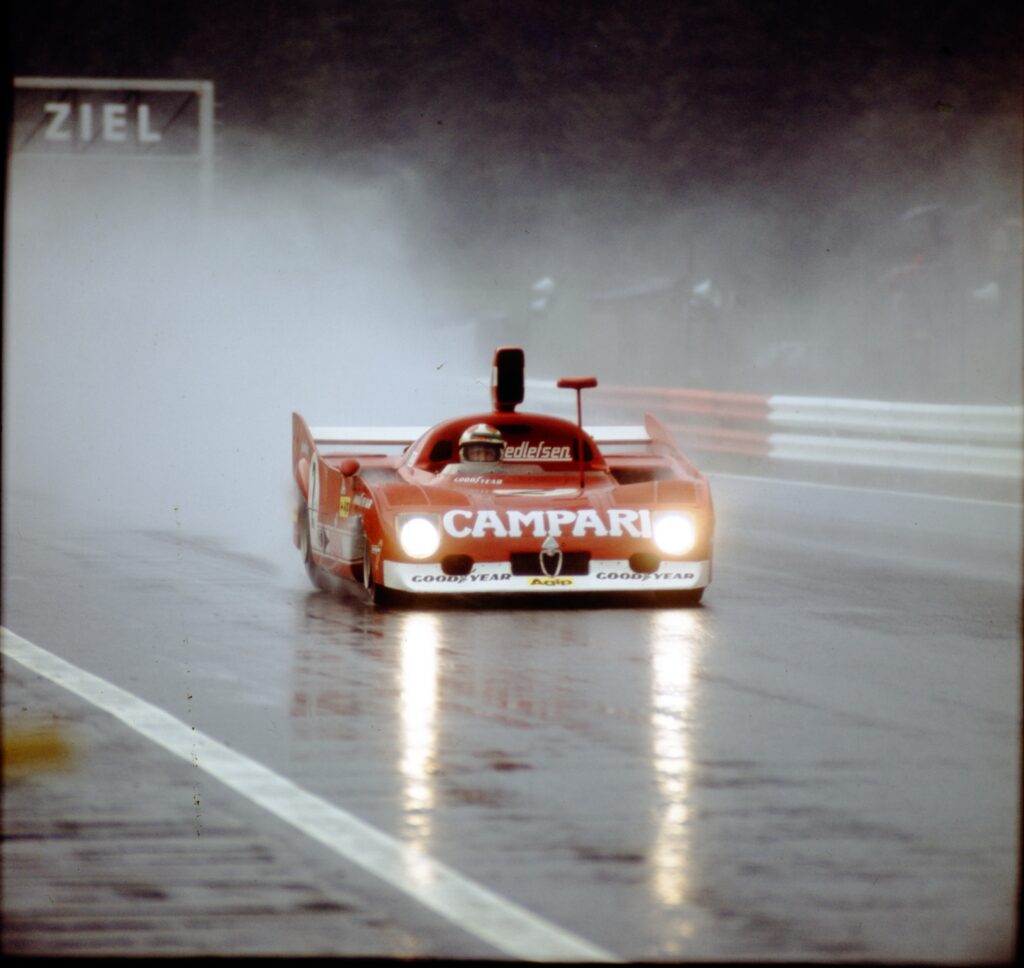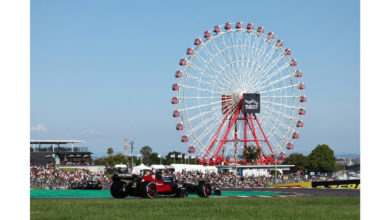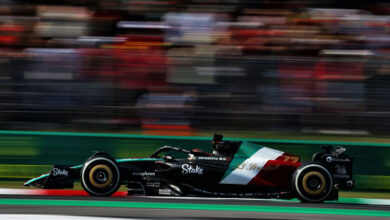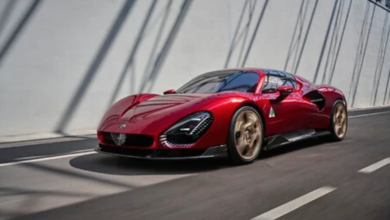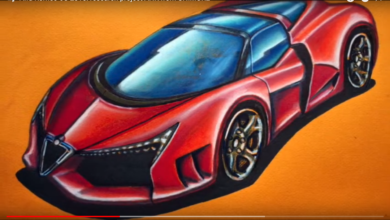Alfa Romeo and its “Tribe” celebrate the Quadrifoglio’s centenary at the Le Mans Classic 2023
Alfa Romeo is featuring at the Le Mans Classic, in the centenary year of both the Quadrifoglio and of the historic French circuit, where the Italian brand has indelibly left its mark Alfa Romeo is sending models of inestimable sporting value there: the 6C 3000CM (1953); the 33 Stradale prototipo (1967); the 33/3 Litri “Le Mans” (1970); the 33 TT 12 (1975) The 2nd Tribe Days: alongside the brand will be international clubs and owners of the highest-performance current Alfa Romeo models, as guests at the unmissable annual event Alfa Romeo dedicates to its fans.

The 11th Le Mans Classic is due to be held on the legendary circuit of its 24 Hours, from June 29th to July 2nd. This unmissable event in the world of vintage car competition offers tens of thousands of visitors and enthusiasts the opportunity to admire on the Le Mans track racing cars from the 1920s to the late ’70s that marked the history of this legendary race.
This is a great opportunity for Alfa Romeo, four-time winner of the competition, to present some of the exceptional models that have formed part of the brand’s extraordinary sporting adventure, as well as that of the Circuit de la Sarthe. This opportunity is all the more wonderful for the fact that the centenary of the circuit on which the 24 Hours of Le Mans is held also marks 100 years of the iconic Quadrifoglio, an emblem of the highest-performance cars from the Alfa Romeo brand since 1923. Two centenary milestones, essential in the history of motor racing, will be celebrated this year at the Le Mans Classic.
At the event, four exceptional models, gems from the Heritage collection on show at the Museo Storico Alfa Romeo in Arese, will be on display at the brand’s stand: a 6C 3000M (1953); the extraordinary 33 Stradale prototipo (1967); a 33/3 Litri “Le Mans” (1970); a 33 TT 12 (1975). Alongside them, the latest additions to the line-up will also be on show: the highly exclusive Giulia and Stelvio Quadrifoglio “100° Anniversario” are juxtaposed with a Tonale Plug-in Hybrid Q4, Alfa Romeo’s first plug-in hybrid Q4 SUV.
The icing on the birthday cake – the very exclusive Alfa Romeo Giulia SWB Zagato – will be running its first laps in public during the parade the morning of Saturday, July 1st. Visitors will be able to witness its world premiere in the “Village des Constructeurs.” It will be there alongside a remarkable Alfa Romeo 33/3 that took part in the 24 Hours of Le Mans in 1970 adorned with the logo of Autodelta, the official team of Alfa Romeo’s racing department, which celebrates its 60th anniversary this year.
Alfa Romeo is also inviting all its fans, the Alfisti “tribe”, to feature in this unmissable event. From Friday, June 30th to Sunday, July 2nd, Alfa Romeo is inviting its impassioned customers and clubs to take part in the second Alfa Romeo Tribe Days. Three days of pure passion, punctuated by new events and exclusive driving experiences on the Montlhéry and Le Mans circuits, where some of the most stunning chapters in the history of international motorsport have been written.
6C 3000 CM spider (1953)
The “6C 3000 Competizione Maggiorata” (CM), made by the Milan coachbuilder Colli, was created in 1953 as a racing coupé for the “sports car” category. This model was designed to compete in the 1953 1000 Miglia and 24 Hours of Le Mans.
The engine of this racing spider, designed by Giuseppe Busso, borrowed many components from the previous 3-liter in-line 6-cylinder, produced expressly for the 6C 3000 prototype, but with its displacement increased to 3495 cc and output once it had been fully tuned up of 275 hp.
The coupé version was the runner-up at the 1953 1000 Miglia, driven by the legendary Juan Manuel Fangio, 1951 F1 world champion with the GP Tipo 158-159 “Alfetta” and the Alfa team’s best driver at the time. The Argentinian driver dominated the race but was forced to slow down due to an issue with his chassis.
The experience at La Sarthe in June 1953 was even more unfortunate for the Alfa Romeo 3000 CM coupé: all the cars had to withdraw from the race. The main reason was the short time they had to complete the entire project: the main and imperative objective of the design office was to plan and organize the production of a new compact model, which would become the “Giulietta”.
Conversely, the spider version won the first “Gran Premio Supercortemmaggiore”, run in Merano in 1953, with Juan Manuel Fangio behind the wheel. This extraordinary car is usually on display at the Museo Alfa Romeo. The car on show here is equipped with disc brakes fitted by the R&D department in 1955.
Alfa Romeo 33 Stradale prototipo (1967)
Based on the Tipo 33/2 that racked up multiple victories in competition, a limited series of 18 coupés was created between 1967 and 1969, for the road, with a fascinating aluminum body designed by Franco Scaglione.
A legendary model that marked the history of Alfa Romeo, but also automotive history in general, for both its rarity and its sculptural beauty. It is one of the few road cars based on a racing model; it inherited outstanding technical solutions that, 50 years later, can still overshadow those of sophisticated modern cars. Its design, the quintessence of automotive beauty, is almost indescribable: it is embodied by the balance of forms, the purity of lines, and the elegance of every last detail.
The original chassis, taken from the racing car, consists of three large aluminum alloy tubes with a diameter of 20 cm, arranged to form an asymmetrical letter H. Two cast magnesium frames were then attached to the ends: the front supported the suspension and pedals; the rear supported the engine, transmission and suspension. The fuel tanks, made of rubber, were housed in the tubes of the chassis.
Compared to the competition version, the 33 Stradale was distinguished by a wheelbase extended by 10 cm and a chassis reinforced by sheet steel under the cockpit, as well as trim and finishes suitable for use on the road. Even the engine – a two-liter 90° V8 – was “softened” and reduced to 230 hp (compared to the 270 hp of the prototype version), although it could still push the car to 260 km/h.
Alfa Romeo 33/3 Litri Le Mans (1970).
Alfa Romeo’s return to sports car racing in 1967, with the “Tipo 33” project, formed part of a process of evolution that would last a decade. After the successful debut of the two-liter car at Fléron, and ahead of its major victories in 1968, Autodelta designed a new, 3-liter version of the V8 engine, aimed at contesting overall victories.
Things looked promising, but when the car debuted at the 12 Hours of Sebring in 1969, it was forced to withdraw. Over the season, it took two victories (Zeltweg and Pergusa), then in 1970, the Autodelta team consolidated the development of the 33/3.
The car tuned up for the following year had been thoroughly revised: the engine delivered 420 hp; the gearbox had been redesigned; the weight had been reduced to 650 kg; it had an all-new body.
1971 was the year of all the victories: the 1000 km of Brands Hatch (De Adamich-Pescarolo), the Targa Florio (Vaccarella-Hezemans) and the 6 Hours of Watkins Glen (De Adamich-Peterson) were the most prestigious victories that made Alfa Romeo the runner-up in the Constructors’ World Championship.
Alfa Romeo 33 TT 12 (1975)
The 33 TT 12 made its debut at the 1000 km of Spa-Francorchamps on May 5th, 1973, when the Constructors’ World Championship was at its peak, with a major commitment from the most prestigious brands such as Alfa Romeo and its competition division, “Autodelta”.
Whilst the name “33” – seen on circuits since 1967 – evoked a legendary racing car, “TT” stood for telaio tubolare (tubular chassis), derived from the previous “33 TT3” with a 90° V8 engine. As for “12”, it represented the number of cylinders in the new 3-liter flat-12 engine, with the capability to exceed an output of 500 hp. The body featured unusual aerodynamics and an unmistakable aesthetic, consisting of two side fins and a large air intake above the engine hood.
Autodelta technicians decided that the 1973 season would be dedicated to the full development of the new car, then one year later the 33 TT 12 racked up its first successes, including first place at the 1000 km of Monza.
In 1974, Alfa Romeo management decided to participate in the 24 hours of Le Mans, in order to beat Team Matra, its first genuine competitor. During the qualifiers in March, Merzario and his 33 TT 12 took off with a lap in 3 minutes 31.000 seconds, four seconds ahead of Matra. But in the end, Alfa Romeo and Autodelta decided not to take part, due to organizational reasons.
The 1975 season was the golden age of the 33 TT 12. The best drivers took the wheel of the “TT 12” and brought home the coveted Constructors’ World Championship: Merzario – the most talented of them, Andretti, Bell, Brambilla, Ickx, Laffite, Mass, Pescarolo, Scheckter, Vaccarella, Watson.


